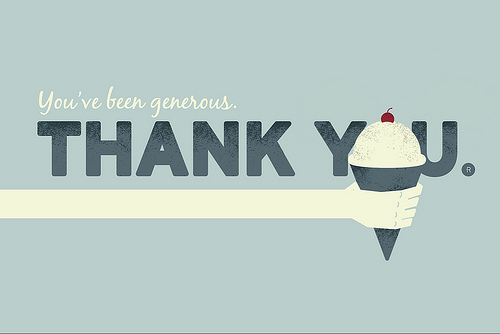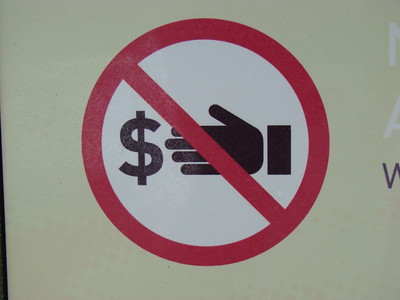Everyone likes to feel appreciated and that includes your donors. In fact, thanking your donors should be a priority for your nonprofit organization. Is that the case? Often the answer is no.
Thanking your donors is not just something you do after you receive a donation and then do nothing for a while.
Gratitude is something you need to show all year round and with Valentine’s Day coming up, that’s a great opportunity to thank your donors and show them how much you appreciate their support.
Maybe you would rather not go the Valentine’s Day route, which is understandable. But you should still do something to show appreciation this month (and every month). The holidays are over and February can be a dreary month if you live in the Northern hemisphere. Your donors could use a little pick-me-up.
This is also a good opportunity to keep in touch with the people who gave to your year-end appeal, especially first-time donors. If you haven’t shown any appreciation since your year-end appeal, you don’t want to wait much longer.
Your donors have the option to give to countless nonprofit organizations, but they chose yours. Keep this quote from Mark Phillips in mind – “They are not your donors; you are one of their charities.” Shouldn’t they get some appreciation from you?
Here are a few ways you thank your donors throughout the year.
Create a thank you photo
Make your donor’s day with a great photo like this one.
You can send thank you photos via email and social media, use one to create a card, and include one on your thank you landing page.
Make a video
Videos are a great way to connect with your donors. They’re simple, yet effective, so don’t worry if you weren’t a film major. It’s not too hard to create a video.
One idea for your video is to show a bunch of people saying thank you. You’ll want your video to be short, donor-centered, and show your organization’s work up close and personal. You can also create personalized videos, which are always a nice gesture.
Your thank you landing page is the perfect place to put a video. This is your first opportunity to say thank you and most landing pages are just boring receipts (and receipts fall short when it comes to showing gratitude). You can also put your thank you video on your website and share it by email and social media.
Send a card
A handwritten note will also brighten your donor’s day. If you don’t have the budget to send cards to everyone, send them to your most valuable donors. These may not be the ones who give you the most money. Do you have donors who have supported your organization for more than three years? How about more than five years? These are your valuable donors. Other valuable donors are the ones who have been generous since the pandemic started. Don’t take any of these donors for granted.
That said, I do think you should make every effort to send a card to ALL your donors at least once a year. You can spread it out so you mail a certain number of cards each month, ensuring all your donors get one sometime during the year.
Many organizations don’t send thank you cards, so you’ll stand out if you do.
Share an update
In addition to saying thank you, share a brief update on your success and challenges. Emphasize how you couldn’t have helped someone without your donor’s support. For example –Thanks to you, Kevin won’t go to bed hungry tonight. It’s been tough for his family to make ends meet right now.
Phrases like Thanks to you or Because of you should dominate your newsletters and updates.
How you can do better
Make this the year you do a better job of thanking your donors. Remember, it should be a priority.
Thank your donors right away and send a thank you note/letter or make a phone call. Electronic thank yous aren’t good enough.
Be personal and conversational when you thank your donors. Don’t use jargon or other language they won’t understand. Write from the heart, but be sincere. Give specific examples of how your donors are helping you make a difference.
Also, make sure your thank you note/letter puts gratitude front and center. You don’t need to explain what your organization does, brag, or ask for another donation. You have plenty of opportunities to ask for donations. Plain and simple, the purpose of a thank you letter is to thank your donors.
I’m a big fan of communicating by mail, even if it’s only a few times a year. It’s much more personal. Yet, many nonprofits are skittish about spending too much on mailing costs.
If your budget doesn’t allow you to mail handwritten cards, is there a way you can change that? You may be able to get a print shop to donate cards. You could also look for additional sources of unrestricted funding to cover cards and postage. Think of these as essential expenses for your essential donors.
Maybe you need a change of culture – a culture of gratitude. This comes from the top, but you also need to get your board, all staff, and volunteers invested and involved in thanking your donors.
You can’t say thank you enough. Make a commitment to thank your donors at least once a month. Create a thank you plan to help you with this. Planning ahead and creating systems makes a difference.
Keep thinking of ways to let your donors know how much you appreciate them. You don’t even need to wait for a holiday or special occasion. Just thank your donors because they’re amazing and you wouldn’t be able to make a difference without them.
Keep reading for more information about how you can make thanking your donors a priority.
Donor Appreciation: Creating a Strategy (And 22+ Ideas!)
Beyond the Basics: 5 Creative Ways to Thank Donors and STAND OUT
How to Write the Perfect Thank You Message for Donors
Donor Appreciation: 3 Meaningful Ways to Show Your Gratitude









